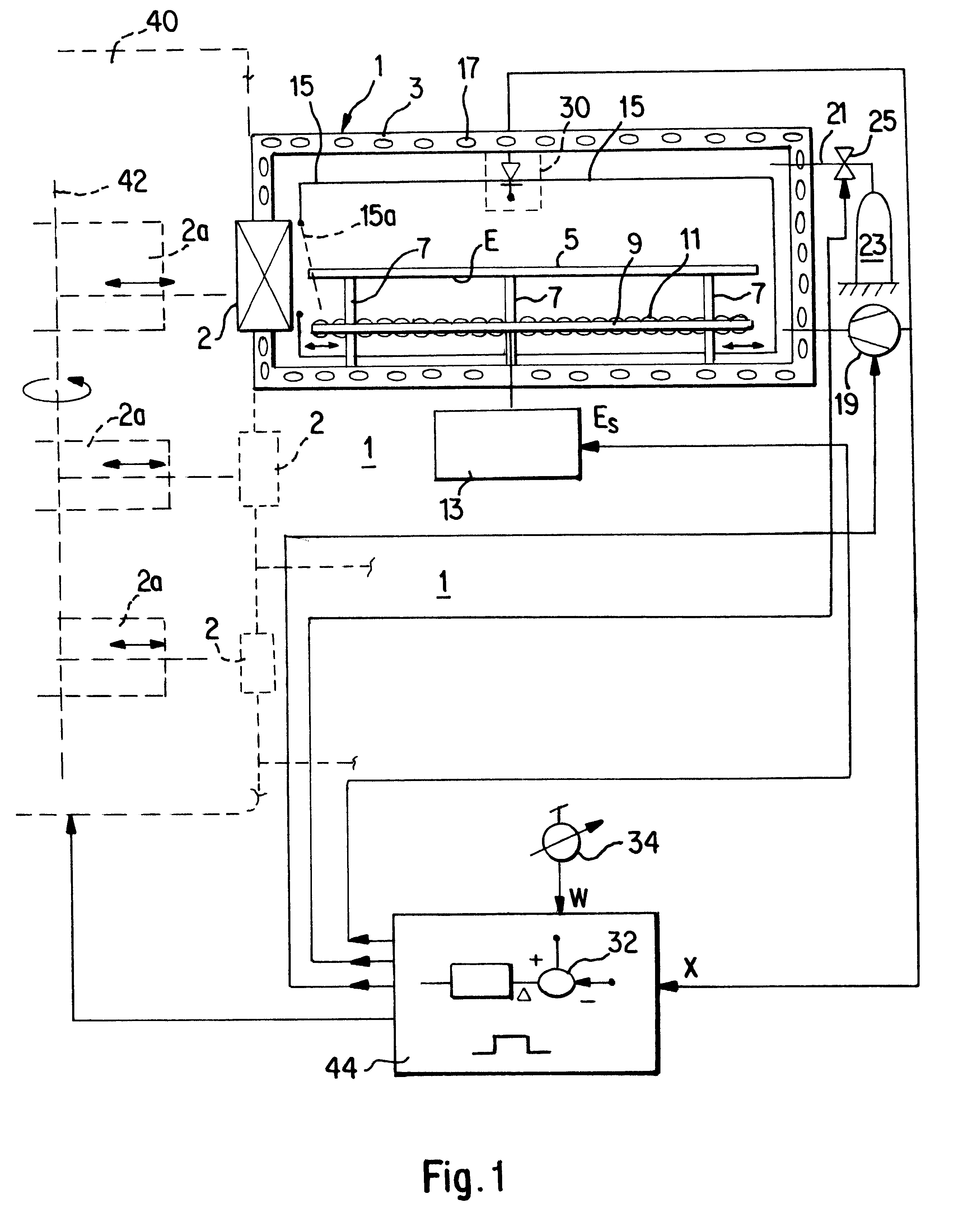Heat conditioning process
- Summary
- Abstract
- Description
- Claims
- Application Information
AI Technical Summary
Benefits of technology
Problems solved by technology
Method used
Image
Examples
Embodiment Construction
According to FIG. 1 an inventive heating vacuum chamber 1 comprises a surrounding rigid wall 3 defining in the preferred form as shown for a flat box-shaped or drawer-shaped chamber. The interior of the chamber 1 is accessible for feeding and removing a glass substrate 5 via an input / output lock as e.g. realised by a slot valve.
The substrate 5 is deposited within chamber 1 on a holder arrangement which is formed by a predetermined number of pins 7, according to the size of the substrate 5, which pins are of a thermically resistant, thermically isolating material, as of a polymer material. As will be later explained, the holder arrangement and especially the pins 7 are provided with a reflective outer layer, the characteristics of the reflecting layer as especially of Aluminum being substantially equal to that of a reflecting arrangement as previously described.
Beneath the deposition plane E for the substrate 5, as defined by the pins 7, there is mounted in the chamber a lamp holder ...
PUM
| Property | Measurement | Unit |
|---|---|---|
| Fraction | aaaaa | aaaaa |
| Fraction | aaaaa | aaaaa |
| Fraction | aaaaa | aaaaa |
Abstract
Description
Claims
Application Information
 Login to View More
Login to View More - R&D
- Intellectual Property
- Life Sciences
- Materials
- Tech Scout
- Unparalleled Data Quality
- Higher Quality Content
- 60% Fewer Hallucinations
Browse by: Latest US Patents, China's latest patents, Technical Efficacy Thesaurus, Application Domain, Technology Topic, Popular Technical Reports.
© 2025 PatSnap. All rights reserved.Legal|Privacy policy|Modern Slavery Act Transparency Statement|Sitemap|About US| Contact US: help@patsnap.com



